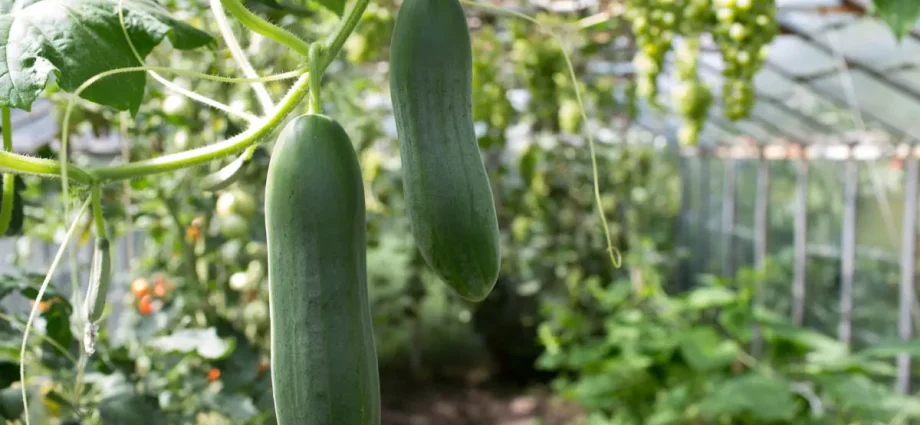Contents
Cucumbers are a common agricultural crop grown all over the world, the number of varieties has a huge variety. Among them, the main part is occupied by hybrid cucumbers, there are about 900 species.
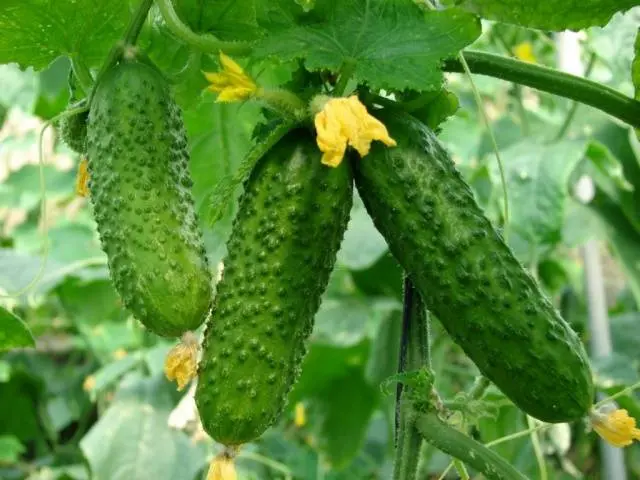
It is quite difficult to figure out on your own which cucumbers should be planted in a greenhouse in a particular region, even experienced agronomists will not always answer this question. There are hybrid varieties of cucumbers that can produce high yields, but specifically in your area, their yield will be negligible.
On closed ground, parthenocarpic cucumbers declared themselves to be high yields, they are gradually replacing the varieties familiar to everyone, it should be noted that they are also hybrid, which means that it is not possible to obtain seed material from them at home, this is done by specialized scientific farms .
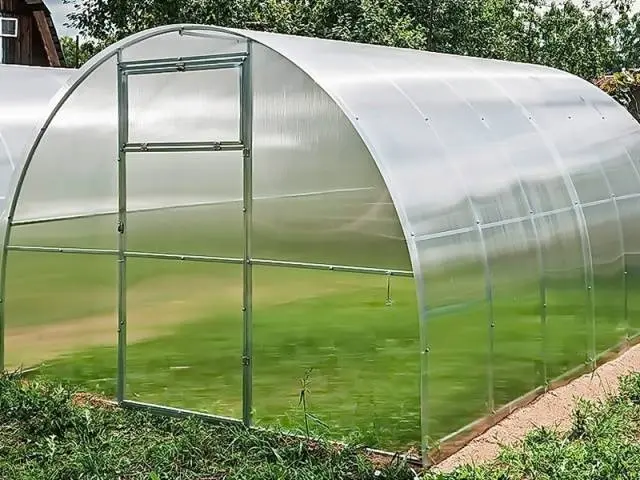
The advantages of growing hybrid cucumbers in a greenhouse, over open ground, are that in a greenhouse you can get a crop much faster, and the stability of the yield of cucumbers remains at a high level, this is due to the absence of negative natural factors affecting the cultivation of hybrids. In addition, in the greenhouse, you can create the ideal microclimate for the growth of cucumbers, forcing humidity and maintaining a comfortable temperature.
How can an inexperienced greenhouse owner distinguish hybrid cucumbers from varietal ones when buying?
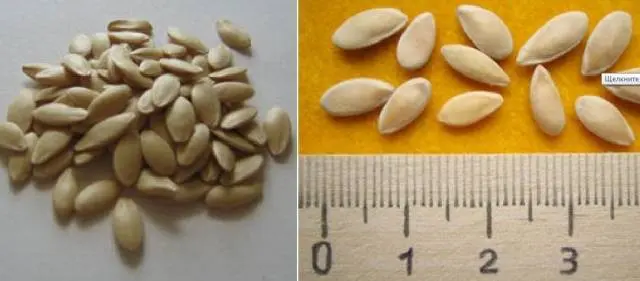
Hybrid cucumbers grown both outdoors and in a greenhouse have a number of advantages over varietal ones:
- Endurance to sharp temperature changes in the downward direction;
- Significant resistance to typical cucumber diseases;
- Regular and high-quality harvests, with the declared characteristics of the fruit.
It should be remembered that chasing the huge yields claimed on hybrids of foreign origin, whether Dutch or German cucumbers, you will not necessarily be able to collect these crops in your greenhouse. After all, the conditions in European laboratories and in domestic greenhouses vary significantly, so it is better to choose local varieties of hybrids that will show the declared results in your greenhouse.
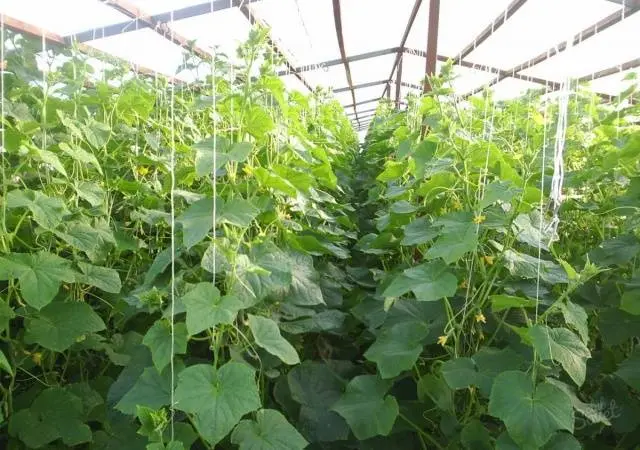
The most common cucumber hybrids are:
- Regina plus – F1;
- German – F1;
- Arina – F1;
- Sultan – F1;
- Blank – F1;
- Green wave – F1;
- April – F1;
- Ginga – F1;
- Arina – F1;
- Anyuta – F1;
- Orpheus – F1;
- Burevestnik – F1;
- Passamonte – F1;
- Be healthy – F1.
When choosing a variety of hybrid cucumbers, you should pay attention to a number of specific factors that differ for each variety:
- What is the purpose of the fruit?
- The ripening period of cucumbers;
- hybrid yield;
- Seasonality of cucumber output;
- The degree of hardiness of the variety in the shade;
- Resistance to diseases of cucumbers and pests.

Taking into account all these properties, you will be able to prepare the varieties necessary for your conditions, whether it is a film greenhouse or a polycarbonate greenhouse. But the most important criterion is still zoning, cucumber hybrids must be designed specifically for your region.
Pollination methods
Both varietal and hybrid cucumbers can be divided according to the method of pollination:
- Parthenocarpic – varieties of greenhouse cucumbers, mostly female types, seeds are almost completely absent in them;
- Insect pollinated – such cucumbers can only be used in greenhouses with a sliding ceiling;
- Self-pollinating – cucumbers with flowers that have female and male properties, this gives them the opportunity to pollinate themselves.
Purpose of varieties
When buying seeds, you should initially understand the purpose of their future harvest, they are:
- Universal varieties of cucumbers – Blagodatny F1, Voskhod F1;
- Pickling cucumbers are thick-skinned varieties with dark and powerful thorns, Grasshopper F1, Brigantine F1, Cascade F1 demonstrate the highest yield;
- Salad – Tamerlane F1, Masha F1, Vicenta F1.
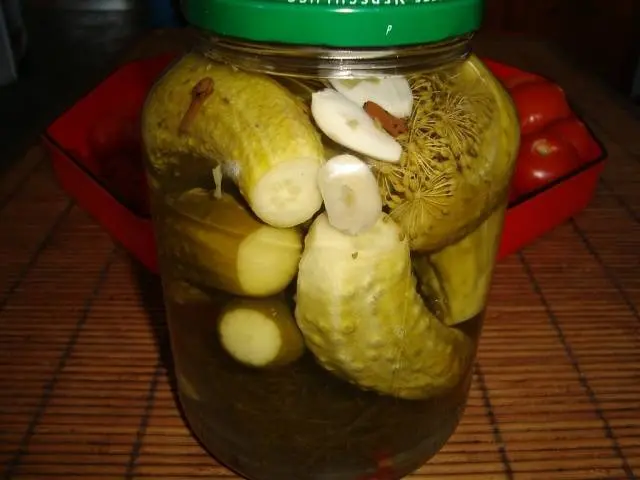
Types of pollination
The trends in growing cucumbers in a greenhouse are such that parthenocarpic varieties for the greenhouse are replacing self-pollinated ones, and insect-pollinated varieties are practically unsuitable for a large number of greenhouses. They have a number of advantages:
- Taste qualities are in no way inferior to common cucumbers, their peel does not have bitterness, and the composition of minerals is more balanced.
- Year-round harvest, despite the weather outside the greenhouse, such cucumbers bear fruit for up to eight months a year, regardless of the climatic zone.
- The presentation of cucumbers is ideal, all fruits are of the same size, shape and color, among other things, these cucumbers last longer than competitors;
- There are varieties for universal use, of which you can equally successfully prepare a salad or make seamings for the winter;
- The absence of such a factor as yellowing of the peel, unlike ordinary cucumbers. This is due to the fact that ordinary cucumbers turn yellow due to the ripening of seeds, but there are no seeds in parthenocarpic ones, and therefore it does not begin to ripen. Cucumbers stay green and attractive longer.
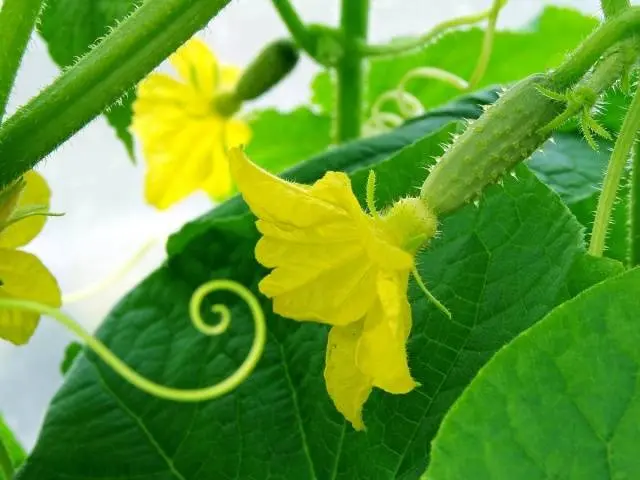
Of course, there are also disadvantages, all hybrids of cucumbers and other vegetables have poor viability, which means that the demands on agricultural technologies must be increased, otherwise there will be no crop at all in the greenhouse. Although modern hybrids have gained greater viability compared to samples of past years.
Seasonal groups of cucumbers
It is worth noting that even in a greenhouse for cucumber hybrids there is a time of year value. So, there are cucumbers for winter cultivation in a greenhouse, and there are hybrids for summer cultivation. But given the period of growing cucumbers in a greenhouse, for convenience they were divided into three groups:
Winter-spring varieties
These hybrids are undemanding to light, their fruiting period is rather short, and their palatability is at a high level. Usually they are planted in a greenhouse in February, these include:
- Moscow-greenhouse F1 – parthenocarpic hybrid of fast maturation;
- Relay F1 – has an average ripening period, but high yields;
Spring-summer varieties
Unpretentious varieties of cucumbers, they have proven themselves with high yields, unpretentiousness, good taste and resistance to lower temperatures in the greenhouse:
- April F1 – has large fruits weighing up to 170 grams. and high taste characteristics;
- Zozulya F1 is a hybrid type cucumber with female flowers, it also has rather large fruits.
Summer-autumn varieties
They are planted in July, these hybrids are distinguished by a long fruiting period, up to November, they are undemanding to good lighting in the greenhouse.
- Maryina Grove F1 – a hybrid of gherkins self-pollinating in a greenhouse;
- Anyuta F1 is a parthenocarpic type of hybrid, undemanding to care for.










